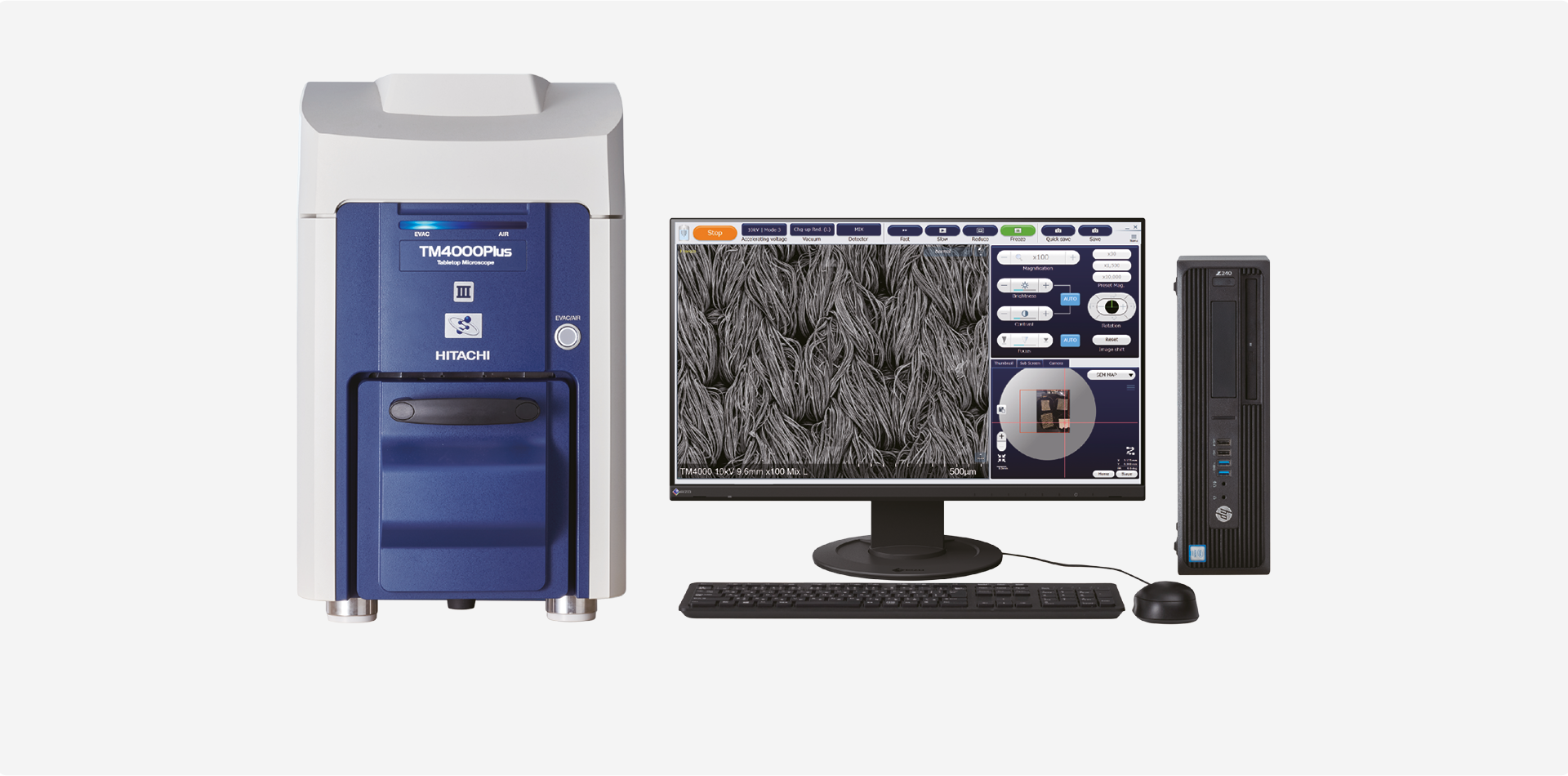
3 min read
The Hitachi TM4000PlusIII – Bringing High-Performance SEM to the Tabletop
Mar 13, 2025 11:37:59 AM
Scanning electron microscopes (SEM) outperform classical light microscopes when it comes to the resolution of small objects, depth of focus, and access to strong materials contrast. SEMs also help you perform elemental analysis via EDS.
But investing in a traditional SEM comes with a high cost, complexity, and significant training requirements. So it’s difficult to introduce electron microscopy to an R&D or quality control environment.
A compact, high-performance and automated tabletop SEM, on the other hand, is a practical, cost-effective solution.
Tabletop microscopes give you high resolution imaging and analysis without needing to invest in larger, more costly instruments that come with significant space requirements and operator training needs.
In this context, Hitachi’s TM4000PlusIII tabletop SEM is ideal for academic and industrial labs looking for a serious “all-round” microscope without the serious price tag or footprint.

Key features of the TM4000PlusIII
Good resolution, high depth-of-focus imaging, and elemental analysis
The TM4000PlusIII delivers precise, contrast-rich imaging at accelerating voltages of 5, 10 or 15kV, which allow users to adjust settings based on sample needs. A segmented high-sensitivity backscattered electron detector can output compositional, topographical, or shaded images, and the secondary electron detector contributes fine surface details and cathodoluminescence information.
Optional energy-dispersive X-ray spectroscopy (EDS) detectors benefit from the extra-high 20kV accelerating voltage with a high probe current and give you added functionality. So you can carry out meaningful elemental analysis and compositional mappings in a short time.
Automation for consistency and efficiency
Automation is at the core of the TM4000PlusIII, starting with auto brightness and contrast for all detectors, and a high-accuracy auto focus. Workflow definition and automation with recipe control functions for automated stage movement, magnification adjustments, and image capture let you perform operations with minimal manual intervention. This frees you from repetitive routine SEM tasks and ensures less experienced operators can enjoy reproducible results.
Enhanced navigation with an optical camera
The TM4000PlusIII includes a built-in colour camera that captures an overview image of the sample. You get a zoomable, detailed map that simplifies navigation across the specimen at any point-of-interest by simply clicking it on the map. SEM overview images can be seamlessly patched into the optical map, making it easy to target specific areas quickly and accurately.
Flexible imaging for various sample types
The TM4000PlusIII comes with 3 low-vacuum modes, a high-sensitivity BSE detector, and a low-vacuum capable SE detector. So it can handle a wide range of samples, including both conductive and non-conductive specimens.
You’re able to handle various sample types with minimum pre-preparation – a major benefit for labs that deal with a wide range of sample types. By reducing the need for extensive sample preparation, you can focus on analysis, saving time without compromising on imaging quality.
Intuitive interface for all users
The TM4000PlusIII’s interface is designed with simplicity and functionality in mind. The microscope offers a seamless experience for both novice users and advanced operators. Easy-to-use controls and reliable automatic image adjustment functions allow you to get started quickly, and advanced settings are available if you want to customize workflows.

Advanced analysis and optional accessories
Integrated EDS for elemental mapping
As mentioned above, the TM4000PlusIII offers integrated EDS options for labs that need compositional data alongside imaging. Features include high probe currents, a maximum accelerating voltage of 20kV, and the instant switching between imaging and EDS analysis without needing to relocate the specimen. So you can perform accurate elemental analysis anytime with speed and ease, helping you get deeper insights into material composition and structure.
Optional features
Besides the workflow automation functions like the Multi-Zigzag, Python scripting, or the graphical oriented EM Flow Creator, the TM4000PlusIII functionality can be expanded with the following:
- A STEM holder which enables transmission imaging on thin samples
- A 3D sample surface reconstruction feature
- A tilt-and-rotation specimen stage
- A Peltier-type specimen cooling stage which lets you image hydrated samples in their natural state.

Cost efficiency and maintenance advantages
Low maintenance requirements
The TM4000PlusIII is designed for ease of maintenance, with features like a filament monitoring system that tracks filament usage, optimizes lifetime, and projects its remaining lifespan. This proactive approach helps labs plan maintenance schedules ahead of time, which minimizes downtime and keeps the microscope ready for high-demand use.
Cost-effective solution for advanced microscopy
The TM4000PlusIII provides advanced imaging and analysis capabilities at a lower operational cost than full-sized SEMs. For labs seeking quality performance without the high overhead, this tabletop SEM is an economical choice.

Conclusion
The Hitachi TM4000PlusIII brings powerful SEM capabilities into a compact and accessible design. It’s a valuable asset for any lab seeking reliable imaging and analysis. With its many features, intuitive operation, and low maintenance needs, the TM4000PlusIII can support lab managers, research scientists, and quality control teams in achieving their microscopy goals.
Ready to see how the TM4000PlusIII can transform your lab’s workflow? Contact us today to learn more. You can also book a demo and experience the capabilities of this advanced tabletop SEM firsthand.